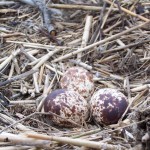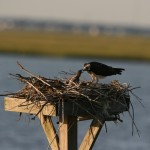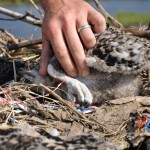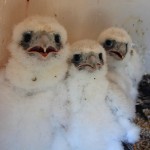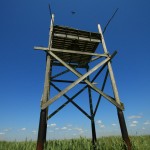Donating falcons
Collecting and transferring peregrine falcons to help recovery efforts in West Virginia
By Ben Wurst, Habitat Program Manager
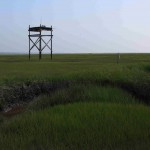
In early June, I assisted Kathy Clark, a zoologist with the Endangered and Nongame Species Program to help collect and transfer peregrine falcon nestlings. The nestlings are being collected to help the recovery of peregrines in New River Gorge National River, West Virginia. The goal of the project is to help promote the recovery of peregrine falcons throughout the Appalachian Mountain range.
The project began in 2006. One fledgling that was found on the ground near the Walt Whitman Bridge New Jersey was contributed to the project. Since then, New Jersey has sent over 30 peregrine nestlings to the recovery project. The falcons are raised at a mountain hack site near Beckley, West Virginia inside New River Gorge.
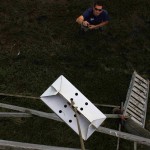
Peregrine falcons are listed as endangered in New Jersey. However, over the past few years the population has done very well. Around 20 pairs occur in the state. In West Virginia, they are very rare. Only one nesting pair was found in 2009.
On Wednesday, nine peregrine nestlings were collected at different locations throughout New Jersey. Coordination of these collections can be dangerous. It also requires a lot a planning and preparation. We have to climb on bridges, ledges, and tall towers and carefully collect the young. ENSP and CWF biologists collected falcons from the Walt Whitman & Burlington-Bristol Bridge, The Hilton in AC, and several old hacking/nesting towers along the Atlantic coast.
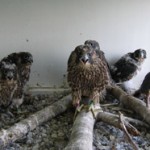
The young were transported to Tri-State Bird Rescue in Delaware. From there they were driven by volunteers to West Virginia where they will be placed in the hacking tower.
“Hacking is the process of placing young falcons in a structure and caring for the birds in a manner that minimizes human exposure until they are mature enough to fly,” explained Matt Varner, NPS wildlife biologist. “The artificial aerie or hack box simulates nesting and feeding conditions on steep rock cliffs – prey is dropped into the box through a tube so the birds don’t see or associate people with the food. This cage-like structure protects the birds from predators during the pre-flight period while allowing them to acclimate to and imprint on the Gorge. When they are ready to ‘fledge’ (fly), they are released from the box, but will return for occasional feedings until their hunting skills allow them to survive on their own.” (http://www.nps.gov/neri/naturescience/peregrine.htm)
